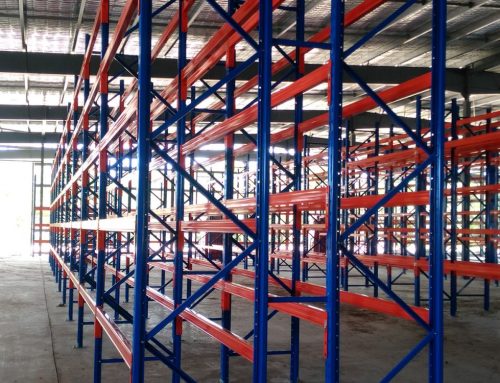Common Warehouse Racking Mistakes You Need to Avoid
Every Brisbane business has experienced good times and bad. No one is exempted from having the occasional setback, so understanding and controlling risk is an important part of reducing those setbacks. Managing your business warehouse requires a lot of skill and dedication particularly in industrial racking. Whether you are new to warehousing or have been around for years, you are always exposed to risks in using pallet racking. In order for you to avoid crisis management and damage expenses, here is a list of top pallet racking mistake and the ways you can prevent them:
Pallet Racking Mistake 1: Overloaded Warehouse Racking
Everyone wants a cost effective storage solution. However, it doesn’t mean that you should overload your racking in order to not get above the budget. It’s important to know the capacity of racks before loading. Different types of racking is designed for specific purposes. If your lightweight rack isn’t designed for that heavy pallet of concrete bags then a collapse is likely to happen.
Always be mindful of the weight of the items you store. You can calculate the weight of a pallet by checking consignment notes, shipping manifests or simply multiplying the individual product weight times the number of products. Moreover, note the weight of the products you store higher up. As much as possible, store your heaviest loads either in the lower levels or better still, on the floor.
Pallet Racking Mistake 2: Climbing Your Warehouse Racking
Saving time equates to more productivity. But it is never advisable to climb your pallet racking just to save time. The temptation to pick orders and load items quickly is tempting but if this means climbing your warehouse racking then its downright stupid. Racks are designed for storing and organising but not for climbing. This terrible habit is a big risk to your employees’ safety.
Pallet Racking Mistake 3: Ignoring Damage
It is part of warehousing that racks will incur some damage. This is a mistake that a lot of warehouse owners tend to ignore. Even the strongest racks made of the highest grade steel will experience deterioration due to collisions, overloading, and material ageing.
It is always best to have your workers certified, skilled and educated when it comes to using warehouse equipment such as forklift trucks. Maintaining a reporting system that aims to keep your warehouse free of damage is important. When damage occurs it needs to be reported to the relevant supervisor and racking maintenance specialist, the racking needs to be unloaded and the racking bay(s) need to be clearly marked as ‘unusable’ until repairs are undertaken. Additionally, regularly do a warehouse inspection. Often damage will go unreported and a monthly check to identify the damage is essential.
Pallet Racking Mistake 4: Improper Rack Loading and Signage
Pallet rack loading cannot be summed up in a mere equation of weight versus structure. There are a lot of things to consider such as shape, size, density of the load, and dimensions to ensure storage racks are safe and effective. Hence, a safe work load sign needs to be installed for every row of racking clearly specifying its weight limits. Australian standards for steel racking (AS4084-2012) require that racking is independently audited on a 12 monthly basis. This audit requires a review of all signage and identification of overloading breaches.
Pallet Racking Mistake 5: Overlooking the Height-to-Depth Ratio
Overlooking the height-to-depth ratio during your pallet racking design can harm your business. Height-to-depth ratio refers to “the ratio of the distance from the floor up to the top beam divided by the depth of frame.” The ratio should not exceed 6-to-1. If this ratio is exceeded then extra safeguards need to be in place such as thicker steel, higher steel grade, increased frame bracing, higher grade base plates, etc.
Pallet Racking Mistake 6: Not Protecting your Racks
Rack protection is such an obvious inclusion to your racking but so often ignored. The use of upright protectors on high vehicle flow areas is not only essential but mandatory under Australian Standards (AS4084-2012). Additionally, at the end of every row of racking it is commonsense to install end barriers.
Pallet Racking Mistake 7: Investing in Low Quality Racking
Oftentimes, businesses tend to lower their standards by purchasing the cheapest pallet racking they can find out there. Don’t be fooled that all systems are the same. In warehouse racking, it is always best to invest in high quality system that is within your budget. The give away signs of low quality racking include upright frames where bracing has been welded in place, welded baseplates and second hand racking where rusting is occurring (the rack has been stored outside) and uprights that are less than 90mm wide (they don’t meet Australian Standards). It may be tempting to buy cheap racking but be careful as there is a good chance it will bite you in the backside in the long term.
PRQ has an audit division that would be very happy to discuss minimising the risk in your warehouse racking. Currently, PRQ are running a free audit promotion (expires 30 June 2017). Call them today on 07 38412233.




